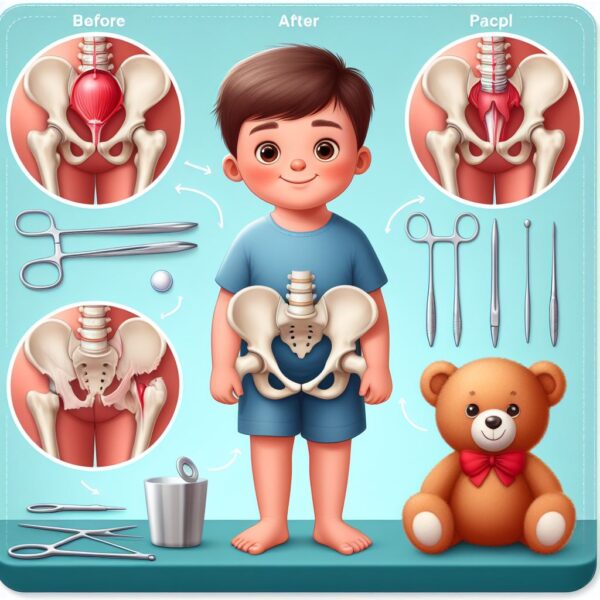

From: 100.00$
The Iran Health Clinic is a reputable medical center that specializes in providing advanced fat transfer treatment to its patients. With a team of experienced doctors who have been trained in the latest fat transfer techniques, the clinic is committed to delivering high-quality care that is tailored to meet the unique needs of each patient.
Using state-of-the-art technology and equipment, the clinic can perform fat transfer procedures that are safe, effective, and minimally invasive. Whether you are looking to restore volume to your face, increase the size of your breasts, or enhance your buttocks, the Iran Health Clinic can help you achieve your desired results.
With a warm and welcoming environment, the clinic strives to make every patient feel comfortable and relaxed throughout their entire treatment process. If you are looking for a trusted medical center for your fat transfer needs, then the Iran Health Clinic is the right choice for you.
Pediatric hip dysplasia correction involves the treatment of a developmental condition where the hip joint is improperly formed, potentially leading to instability, dislocation, or abnormal wear and tear. Treatment may involve non-surgical methods such as bracing or harnessing in milder cases, while more severe or persistent cases may require surgical intervention to correct the hip joint’s structure and alignment.
The surgical procedure for pediatric hip dysplasia correction varies based on the severity and specific characteristics of the condition. It may involve procedures to reposition the hip socket, realign the femur, or address soft tissue imbalances to improve stability and function of the hip joint. Common surgical techniques include pelvic osteotomies, femoral osteotomies, and open reduction of the hip joint.
Pediatric hip dysplasia correction is suitable for children who have:
Pediatric hip dysplasia correction may not be suitable for children who:
Complications associated with pediatric hip dysplasia correction can include:
Preoperative care for pediatric hip dysplasia correction involves comprehensive evaluation, including imaging studies to assess the severity and characteristics of the hip dysplasia. It also involves optimizing the child’s overall health and addressing any specific medical conditions to prepare for surgery.
After pediatric hip dysplasia correction, close monitoring for wound healing, pain management, and rehabilitation is essential. Physical therapy and exercises are crucial to aid in the child’s recovery and to promote hip joint mobility and strength. Long-term follow-up care is essential to monitor for any signs of recurrence of hip instability or dysplasia and to address any potential complications or issues related to the surgery.
Only logged in customers who have purchased this product may leave a review.
Pediatric hip dysplasia correction involves the treatment of a developmental condition where the hip joint is improperly formed, potentially leading to instability, dislocation, or abnormal wear and tear. Treatment may involve non-surgical methods such as bracing or harnessing in milder cases, while more severe or persistent cases may require surgical intervention to correct the hip joint’s structure and alignment.
The surgical procedure for pediatric hip dysplasia correction varies based on the severity and specific characteristics of the condition. It may involve procedures to reposition the hip socket, realign the femur, or address soft tissue imbalances to improve stability and function of the hip joint. Common surgical techniques include pelvic osteotomies, femoral osteotomies, and open reduction of the hip joint.
Pediatric hip dysplasia correction is suitable for children who have:
Pediatric hip dysplasia correction may not be suitable for children who:
Complications associated with pediatric hip dysplasia correction can include:
Preoperative care for pediatric hip dysplasia correction involves comprehensive evaluation, including imaging studies to assess the severity and characteristics of the hip dysplasia. It also involves optimizing the child’s overall health and addressing any specific medical conditions to prepare for surgery.
After pediatric hip dysplasia correction, close monitoring for wound healing, pain management, and rehabilitation is essential. Physical therapy and exercises are crucial to aid in the child’s recovery and to promote hip joint mobility and strength. Long-term follow-up care is essential to monitor for any signs of recurrence of hip instability or dysplasia and to address any potential complications or issues related to the surgery.
There are no reviews yet.
Only logged in customers who have purchased this product may leave a review.
Choosing the right hospital and physician are important factors to consider that significantly influence a patient’s treatment. The preferred choice for many patients is choosing private care.
Choosing the right hospital and physician are important factors to consider that significantly influence a patient’s treatment.
Reviews
There are no reviews yet.